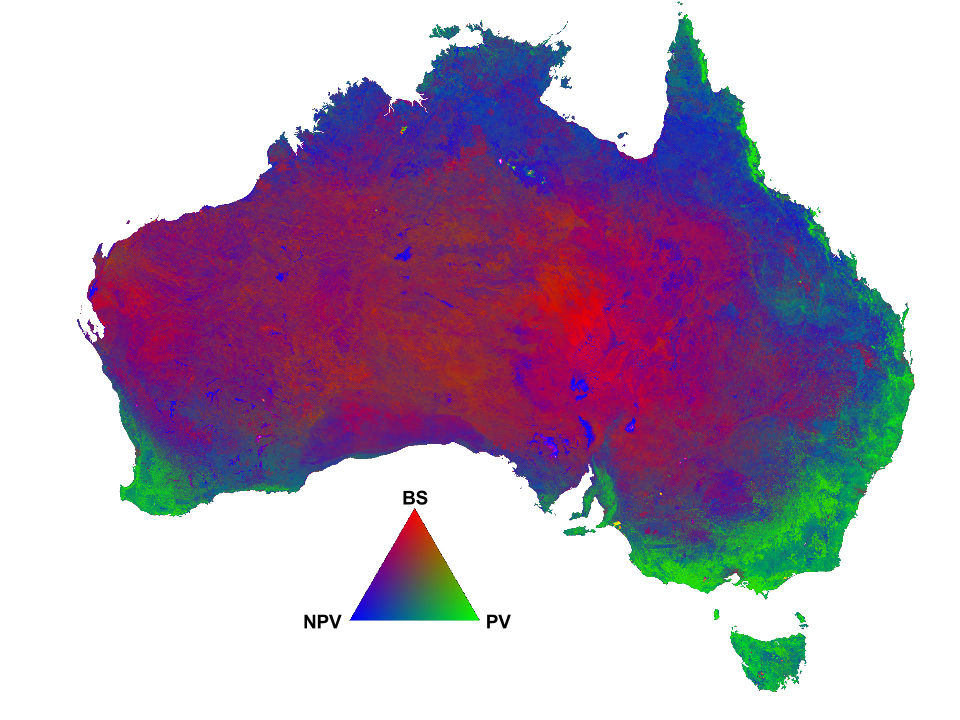More and better satellite data on vegetation cover for Australia

by Juan Pablo Guerschman
Vegetation cover is a key parameter for monitoring land management practices in pastoral and in agricultural settings. Discriminating between photosynthetic (green) and non-photosynthetic (dry, litter) vegetation can also provide useful insights on the way the surface exchanges energy, carbon and water with the atmosphere. These variables, commonly referred to as vegetation fractional cover -for fractions of PV, NPV and the remaining bare soil (BS)- can be estimated with the use of optical sensors such as MODIS and Landsat.
A recent paper by Guerschman et al. uses a linear spectral unmixing algorithm to estimate PV, NPV and BS with Landsat and MODIS data across Australia. They take advantage of a large database of field measurements (1171 observations) of fractional cover taken in the last 12 years for calibrating the algorithm. The fractions of PV, NPV and BS can be estimated with root mean square errors (RMSE) values between 0.11 and 0.18, depending on the fraction and the sensor involved.
Vegetation fractional cover products for Australia are available for users via the AusCover website. A product using MODIS data has 500 meter spatial resolution, covers the period 2000 to present, and has a 8-day compositing period (46 images per year). Access those data following this link.
Using Landsat data the Joint Remote Sensing Research Program (JRSRP, Univ of Qld and Qld Department of Science, Information Technology and Innovation) produces seasonal (3 monthly) summaries, with 30 meter resolution, from 2002 to present. You can find these data via this link. Users of the Australian Geoscience Datacube will also find the JRSRP fractional cover data applied to all the images in the Landsat archive which starts in 1987.
For more information contact juan.guerschman@csiro.au
Fractional cover for Australia in October 2014 derived from MODIS data. Colors show the fractions of photosynthetic vegetation (PV), non-photosynthetic vegetation (NPV) and bare soil (BS).
